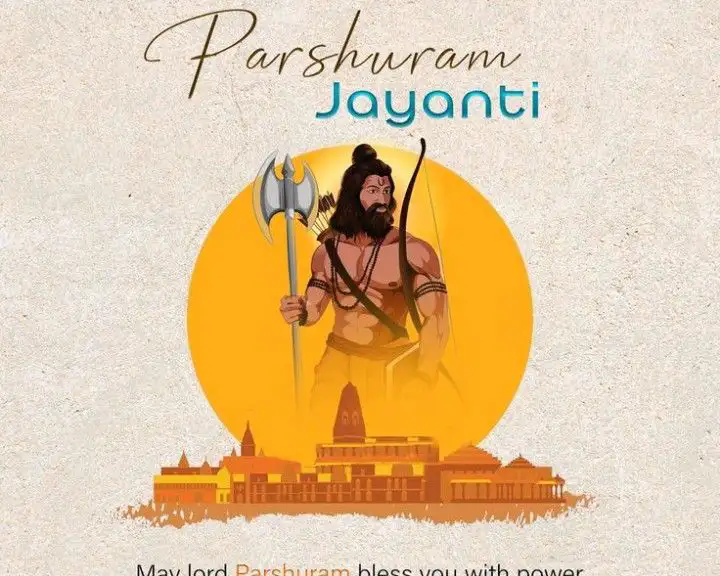Parshuram Jayanti 2025: Accurate Date, Puja Guide, and Rituals – Punjab Declares April 29 as a Gazetted Holiday
Parshuram Jayanti, a day to celebrate the birth of Lord Parshuram, will take place on April 29, 2025. This auspicious day marks the birth of Lord Parshuram, the sixth incarnation of Vishnu, who is depicted as a warrior sage carrying an axe, a symbol of wisdom and strength. Though primarily worshipped in South India and by certain Brahmin communities, Parshuram’s legacy resonates with Hindus nationwide. In 2025, Punjab has declared April 29 as a gazetted holiday, enabling people to fully engage in the rituals and celebrations.

Understanding the Importance of Parshuram Jayanti
Lord Parshuram stands as one of the ten avatars of Vishnu, incarnated to restore cosmic balance during periods of moral decline. His birth, according to Hindu scriptures, occurred during the Treta Yuga, when corrupt Kshatriya rulers ruled the land. To rid the world of evil, Parshuram’s incarnation focused on restoring righteousness. His fierce commitment to dharma and his dedication to Lord Vishnu earned him a revered place in Hinduism.
While South India and specific Brahmin communities have long followed Parshuram’s teachings, his values of justice, strength, and devotion have influenced people across India. Parshuram Jayanti, therefore, serves as a day to reflect on his contributions and the ongoing importance of righteousness.
When is Parshuram Jayanti in 2025?
Parshuram Jayanti falls on the third day of the Shukla Paksha in the Vaishakha month, which typically occurs in April or May. In 2025, this day will fall on April 29. The Punjab government’s decision to declare the date a gazetted holiday highlights the significance of the day, especially in the state, where Parshuram’s worship is prominent.
Rituals and Observances on Parshuram Jayanti
On Parshuram Jayanti, devotees participate in various rituals to honor the deity and seek his blessings. Though these practices differ by region, they typically involve fasting, prayers, and other sacred customs. Here are some of the key rituals:
1. Fasting and Spiritual Cleansing
Fasting is an essential part of Parshuram Jayanti. Devotees observe the fast to cleanse both the body and mind, aligning themselves with Lord Parshuram’s teachings. Some break their fast in the afternoon, while others choose to wait until after the evening aarti. The fast acts as a personal offering and an expression of devotion.
2. Reciting Sacred Texts
Devotees often chant sacred hymns, such as the Parshuram Stotra and the Vishnu Sahasranama, which honor Lord Parshuram and Lord Vishnu. By reciting these texts, worshippers seek divine blessings and spiritual merit. These hymns also deepen the connection with Parshuram, reinforcing his role in the preservation of dharma.
3. Offering Prayers and Rituals to Parshuram’s Idol or Picture
In homes and temples, Lord Parshuram’s idol or picture becomes the focal point of worship. Devotees offer flowers, fruits, incense, and light lamps to honor him. These offerings symbolize respect and gratitude for the deity, while the lighting of lamps represents the triumph of light over darkness.
4. Bhajans and Kirtans
Devotional songs, or bhajans and kirtans, create an atmosphere of devotion during Parshuram Jayanti. These songs celebrate Parshuram’s strength and his unwavering commitment to righteousness. In many places, groups gather to sing these hymns, further uniting the community in their shared faith.
5. Acts of Charity
Charity plays an essential role in the celebrations. Donating food, clothes, or money to those in need is a way to honor Lord Parshuram’s compassionate nature. Devotees believe that performing charitable acts on this day helps accumulate spiritual merit and supports those who need it most.
6. Cultural Programs and Processions
In certain regions, especially in South India, cultural programs like plays, dances, and reenactments of Parshuram’s life are held. These performances highlight his role as a protector of dharma. In some cities, processions featuring his idol move through the streets, accompanied by chants and hymns.
Parshuram Jayanti in Punjab
Parshuram Jayanti will be observed as a public holiday in Punjab in 2025, providing an opportunity for residents to fully engage in religious and cultural activities. In cities such as Amritsar and Ludhiana, where the Brahmin community is prominent, people will gather in temples to observe the traditional rituals. In Chandigarh, public events will focus on Parshuram’s teachings, further celebrating his legacy.
The Worship of Parshuram: Special Significance for South India and Brahmins
Parshuram Jayanti holds particular importance in South India, where Lord Parshuram is highly revered, especially among Brahmin families. Devotees observe strict rituals, including prayers, temple visits, and pilgrimages, to honor the deity. For these communities, Parshuram represents a balance of intellect and strength, making him a model for both spiritual and worldly success.
While other Vishnu avatars like Ram and Krishna dominate worship in different parts of India, Parshuram’s followers view him as a symbol of justice, wisdom, and power. For them, Parshuram Jayanti offers a chance to reflect on his life and teachings, which continue to inspire people across the country.
Conclusion
Parshuram Jayanti in 2025 will be a significant occasion for millions of devotees to honor the life and legacy of Lord Parshuram. The rituals, including fasting, prayer, charity, and cultural events, provide an opportunity for spiritual growth and unity. Punjab’s declaration of a gazetted holiday on April 29 allows more people in the state to participate fully in these observances. Whether in South India or other parts of the country, Parshuram Jayanti remains a day to celebrate dharma, strength, and the eternal quest for justice.






